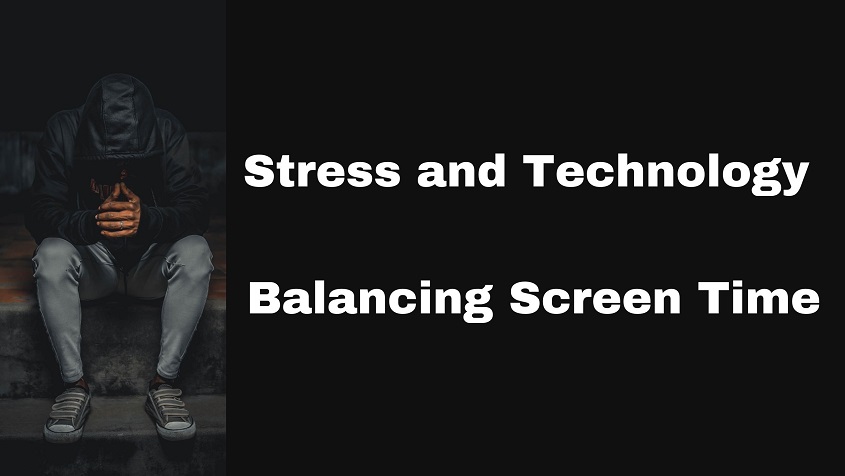Stress and Technology: Balancing Screen Time
In the digital age, technology has become an integral part of our lives, offering convenience, connectivity, and information at our fingertips.
Yet, the constant use of screens and digital devices can also contribute to stress and overwhelm.
Striking a balance between harnessing the benefits of technology and managing its potential negative impacts is essential for maintaining our well-being.
This article explores the intricate relationship between stress and technology, offering insights and practical strategies to help you find equilibrium in the digital world by practicing mindful screen time.
Understanding the Stress-Technology Connection
Information Overload: Constant exposure to notifications, emails, and social media updates can lead to information overload and heightened stress levels.
Digital Distraction: The lure of digital devices can disrupt focus, increase restlessness, and contribute to heightened anxiety.
Comparison and Self-Esteem: Social media platforms can trigger feelings of comparison, leading to stress and lower self-esteem.
Disconnection from Reality: Spending excessive time online can lead to disconnection from real-life interactions, causing feelings of isolation.
Strategies for Mindful Screen Time and Stress Management
Set Intentional Boundaries
Establish designated times for checking emails, social media, and other digital activities. Set limits to prevent constant connectivity.
Practice Digital Detox
Designate periods where you disconnect completely from screens. Use this time for relaxation, reflection, and engaging in offline activities.
Curate Your Digital Space
Unfollow accounts or platforms that contribute to stress or negative emotions. Surround yourself with positive and uplifting content.
Turn Off Notifications
Disable non-essential notifications to prevent interruptions and regain control over your attention.
Engage in Mindful Consumption
Consume digital content mindfully. Pause and reflect on how a post or article makes you feel before reacting or sharing.
Implement Screen-Free Zones
Create technology-free zones in certain areas of your home, such as the bedroom or dining area, to promote relaxation & quality time with loved ones.
Prioritize In-Person Interaction
Try to connect with friends, family, and colleagues in person. Genuine face-to-face interactions reduce feelings of isolation.
Practice Digital Sabbaths
Designate one day per week for a digital Sabbath, where you disconnect from screens and engage in offline activities.
Engage in Hobbies
Devote time to hobbies or activities that don’t involve screens, fostering creativity and relaxation.
Mindful Use of Social Media
Use social media as a tool for connection and inspiration rather than comparison. Engage mindfully, focusing on meaningful interactions.
Conclusion
Technology has transformed how we live and interact, but its effects on stress cannot be ignored.
By practicing mindful screen time and setting intentional boundaries, you can regain control over your relationship with technology and mitigate its potential negative impacts.
Remember that technology should enhance your life, not dominate it. By finding balance, curating your digital space, and prioritizing real-life interactions, you’ll create a healthier, more harmonious relationship with technology while reducing stress and promoting overall well-being.
Thanks for visiting How To Cure Stress

